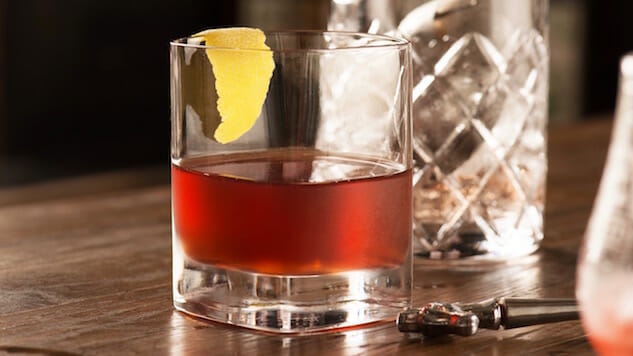
There’s nothing quite like a well made Old Fashioned. Trouble is, a good Old Fashioned is hard to come by. Not unlike the margarita, it’s, at heart, a great cocktail that has been ruined for decades of unnecessary tinkering. The result is an inconsistent and often disappointing experience.
The OF is an OG cocktail — arguably the original American cocktail. A recipe for a “bittered sling” or “cocktail,” described as a combination of spirits, bitters, sugar and water, appears in print as early as 1806.
In 1862, an “Old Fashioned Holland Gin Cocktail” is listed in Jerry Thomas’ Bon Vivant’s Companion. Though the recipe made no mention of whiskey, it did contain all of the other key components. As Thomas prescribed, “Crush a small lump of sugar in a whiskey glass containing a little water, add a lump of ice, two dashes of Angostura bitters, a small piece of lemon peel, one jigger Holland gin. Mix with small bar spoon. Serve.”
The Old Fashioned as we know it, however, didn’t arrived until 1881 at The Pendennis Club in Louisville, Kentucky, where bartender James E. Pepper decided to use bourbon as the base spirit.
And that’s how the recipe stayed until 20th-century meddling (and muddling) turned the cocktail into a cloying and complicated mess. The practice of muddling fruit is the most unfortunate development (the addition of soda water is a close second). Prohibition is over. You’re not drinking bathtub hooch so why hide good whiskey under all that unnecessary sweetness? Let it sing!
Unfortunately, too many bartenders still adhere to the fruit salad preparation, which often makes ordering an old fashioned a crap shoot. (For the record, I’m not passing judgment here; old habits die hard, even if the classic recipe is easier and faster.)
So you can roll the dice on an Old Fashioned, or simply order a Sazerac instead — a classic cocktail similar to the Old Fashioned, but made vastly more interesting and delicious through the addition of absinthe and Peychaud’s bitters, which give it a more complex, herbal character.
The history of the Sazarac is also as deep and rich as the old fashioned. Tracing its roots back to 1830s New Orleans, the cocktail was devised by a pharmacist named Peychaud as a delivery system for his proprietary brand of bitters. As it gained popularity with local revelers, the concoction soon found its way into NOLA barrooms. Though originally made with brandy (which is a variation worth trying), the 1870 phylloxera epidemic in France put the spirit in short supply so bartenders pivoted to rye.
Like New Orleans itself, the Sazerac is dark and mysterious, with layers and depth that elevate and augment the whiskey (or brandy) without masking it. There is little mystery, however, to making a good Sazerac. The recipe is fairly precise leaving little room for error, making it the perfect cocktail for whiskey lovers who have been burned too many times by bad old fashioneds.
Sazerac recipe
Ingredients
2 oz. rye whiskey
1 tsp. simple syrup
1/2 tsp. absinthe
4 dashes Peychaud’s bitters
1 dash Angostura bitters
Lemon peel
Directions: Pack a tumbler with ice and water to chill. In another tumbler, combine the simple syrup, bitters, and rye. Add ice, and stir for about 20 seconds. Empty the ice from the first glass, and coat the inside of it with absinthe. Discard the remaining absinthe. Strain the mixture from the second glass into the first. Express the lemon peel over the drink, rub the peel along the rim of the glass, and add to the drink.
Recipe notes
•The two-glass preparation is ritual, not necessity. Using a mixing glass or tin is a perfectly cromulent variation.
•The inclusion of Angostura is a matter of debate. If you’re a Peychaud partisan, you can leave it out.
•Like Angostura, putting the lemon peel directly into the cocktail is hotly contested. I like it because I think the extra citrus adds more complexity, but traditionalists call it sacrilege.
•The original recipe calls for the cocktail to be served chilled and neat; although, it’s not uncommon for it to be served over ice depending on the preference of the house of the individual guest.
Jim Sabataso is a writer, cocktail enthusiast, and bar director for The Palms Restaurant in Rutland, Vermont. Follow him on Twitter @JimSabataso.